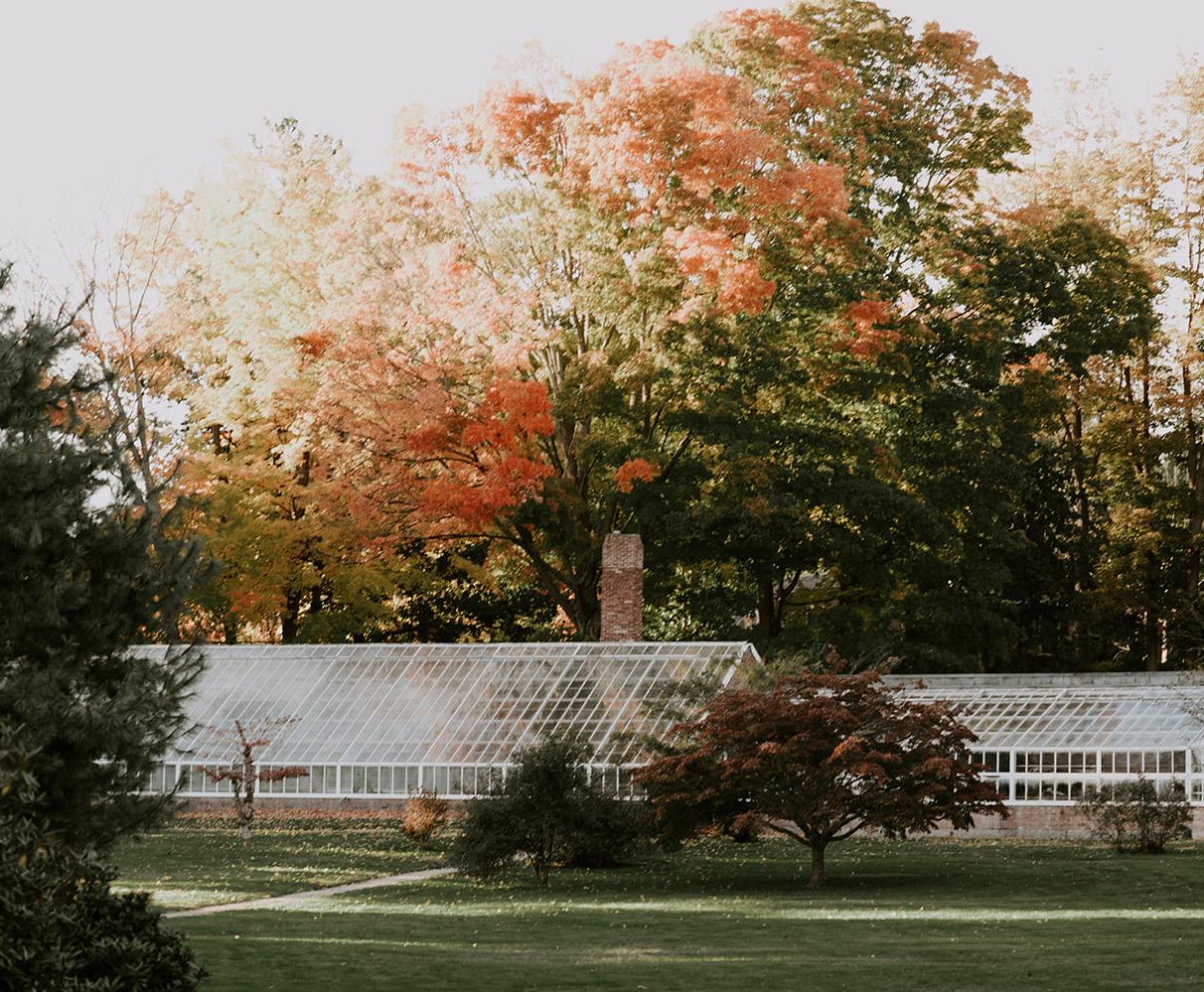
3 minute read
Hotbed of Growth
Madeline Rose Photography Co.
HOW THE LYMAN ESTATE Became a Hotbed of Growth
tepping inside the greenhouses at the Lyman Estate in Waltham, Massachusetts, is like being transported back in time. Indeed, they are among the oldest surviving structures of their kind in the United States. Historic New England is fortunate to have this horticultural gem in its collection of historic properties. Since acquiring The Vale (as the estate was christened), Historic New England has continued the cultivation tradition that the Lyman family began in the late eighteenth century. Today, the Lyman Estate Greenhouses complex includes a grape house that was built in 1804 and the camellia house, erected in 1820. There is also a greenhouse dating to the 1840s that was used for growing cut flowers and now serves as a shop where visitors
page 16 The Lyman Greenhouses today. right Interior view of the 1798 bark pit, also referred to as a bark stove, the first growing structure built on the Lyman Estate.
can buy plants year-round.
In 1793, Theodore Lyman, a merchant in the East India and China trades, started acquiring land in Waltham for his summer residence and farm. Guided by William Bell, the English gardener he hired, Lyman laid out his country estate. He had his first growing structure, called a bark pit or bark stove, erected in 1798 into the side of a south-facing knoll in his kitchen garden area. It contained a firebox flue system and bark beds (placed in the plant beds, tanning bark supplied heat to the plants as it composted). This growing structure had sliding sashes that could be opened along with the wooden vents to let in fresh air and control the temperature. The bark pit was used for starting vegetables to be planted in the property’s kitchen gardens.
The next structure Lyman had built was the two-part citrus and exotic fruit house in 1804. It was located off the approximately 400-yard-long brick peach wall, so named because he had espaliered peaches and apricots growing along it. In the fruit house, Lyman grew lemons, oranges, pineapples, and figs. This south-facing greenhouse had the brick wall as its backbone along with a large stove in the basement connected to a flue system, with chimneys on either end to draw warm air through and to heat the brick. Along with the flue system, thirteen arches in the base of the wall allowed hot air from the stove to circulate into the greenhouse. During the daytime, the sun would keep the

greenhouse warm and some of the heat would be stored in the almost thirteen-inch-thick wall. The original sash was wood, as it is today, but then it was sliding to allow for ventilation.
In 1820, Lyman had a second greenhouse built, primarily for growing peaches. It, too, faced south and had sliding glass sash. In 1908 his grandson, Arthur Theodore Lyman, rebuilt this structure, widening it and raising the roof to accommodate camellia growing, which continues today.
The third greenhouse built along the wall was the flower-growing structure. Erected in 1840 by Theodore’s son George Williams Lyman, it connected the first two greenhouses and was used to grow
cut flowers. Later, George changed the two-part fruit house into a vinery. In 1870, he sent for cuttings from the great ancient grapevine at Hampton Court, site of the royal palace outside London. The black Hamburg Mediterranean grapevine still grows and bears fruit every June, along with another Mediterranean table variety, Green Muscat of Alexandria. These grapes usually ripen in July.
Theodore’s great-grandson Arthur Lyman put up the last greenhouse in the 1930s, a flower-growing structure. The only even-span greenhouse (the pitch of the roof is equal on both sides) on the estate, it extends into the kitchen garden area.
Today, the Lyman Estate Greenhouses specialize in orchids
right The greenhouse shop sells a wide variety of potted plants to the public. below An undated exterior shot of a section of the historic greenhouse.
(there are hundreds of varieties), exotic houseplants, citrus fruits, camellias, succulents, begonias, and herbs. Six large specialty plant sales are held annually. The expert staff assists buyers with their choices, as well as with cultural care and repotting. Besides plants, the sales greenhouse—which is also a gift shop—offers orchidgrowing supplies, pottery, gardening books, fertilizers, notecards, and garden gifts. On the third Saturday of each month, the mansion is open for tours. Visit HistoricNewEngland. org for information on events at the greenhouses and tours of the mansion.












